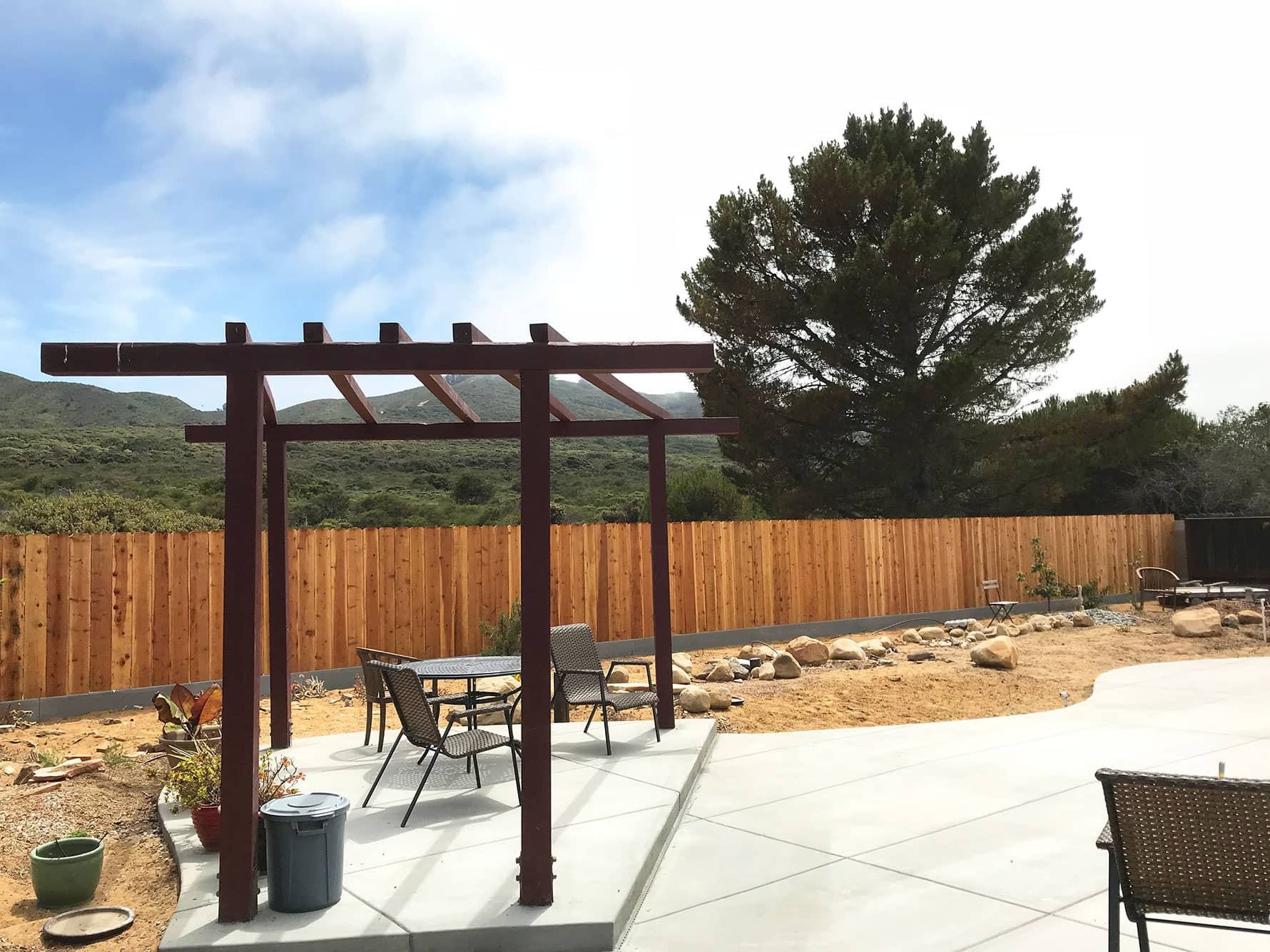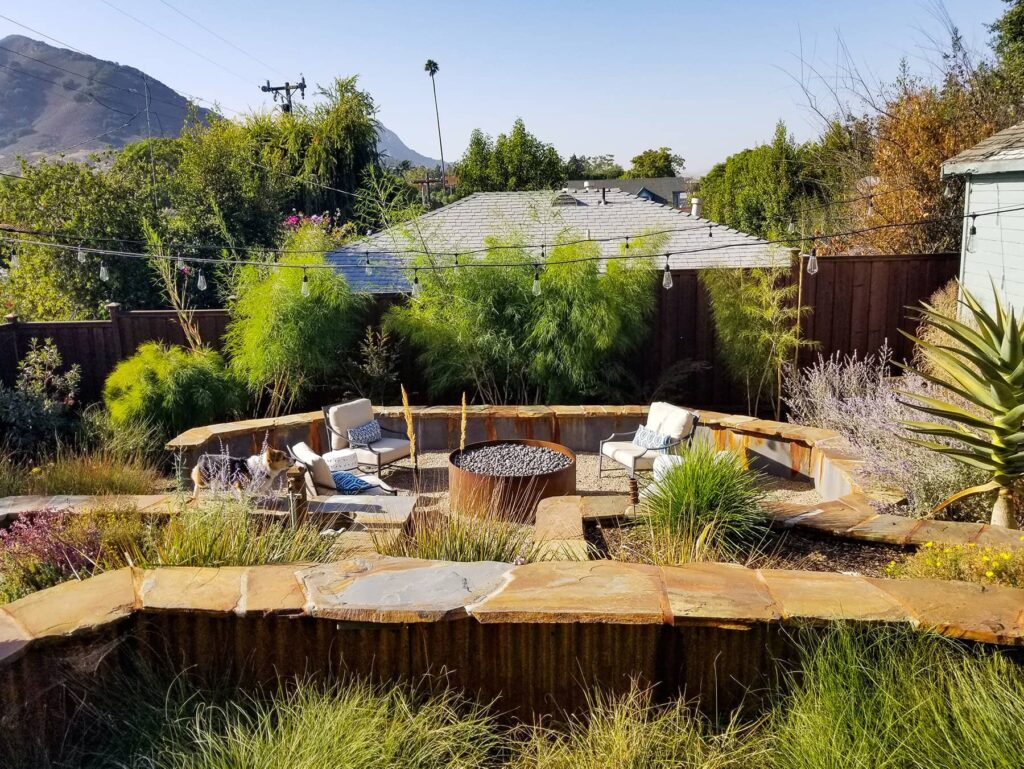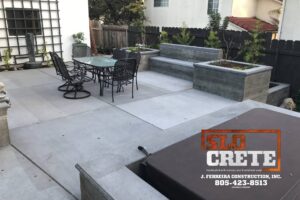A Quick Guide to Concrete Deck Blocks | Everything You Need to Know
Are you considering building a new deck or patio? Concrete deck blocks offer a versatile and durable foundation option. You can get an estimate or keep reading to learn all about concrete deck blocks and how they can enhance your outdoor living space.
Key Takeaways
- Concrete deck blocks are an adjustable and versatile foundation option. They allow for easier, faster installation than poured footing.
- Benefits include better drainage, frost heave resistance, and re-leveling ability.
- Choose interlocking blocks suited for your project’s size and weight needs.
- Allow for soil expansion gaps between blocks and use shims to level any wobble.
- Follow manufacturer spacing guidelines carefully during block installation.
- Periodic maintenance to check for shifting and re-leveling preserves the deck.
What Are Concrete Deck Block?
Concrete deck blocks, also known as deck blocks or patio blocks, are preformed concrete blocks used to support deck and patio construction. They are molded from wet concrete into interlocking or stackable blocks with built-in spacers.
Here are some key features of concrete deck blocks:
- Made from strong, durable concrete
- Offer Elevation for better drainage
- Allow air circulation under the deck
- Interlocking or stackable design for secure construction
- Built-in spacers keep blocks evenly spaced
- No need for concrete footings or piers
- Allow for easy re-leveling in the future
Pros and Cons of Concrete Deck Blocks
Pros
- Easier and faster to install than traditional footings
- Allow for drainage and airflow under the deck
- Interlocking design provides stability
- Ability to re-level over time as needed
- Lighter weight than poured concrete
- Frost heave resistant
- Allow for soil expansion and contraction
- Economical choice compared to other foundation options
Cons
- Heavy blocks can be unwieldly for some DIYers to carry and position
- Improper spacing can undermine strength
- Not recommended for severely uneven sites without addition foundation work
- Care is needed not to over-drill clocks when attaching railings, etc.
- Ongoing maintenance is required to check for shifting
Common Types of Concrete Deck Blocks
| Block Type | Description |
| Individual Pedestal Blocks | Single blocks with space beneath for airflow. They can be stacked to desired height. |
| Adjustable Pedestal Systems | Allow incremental height adjustments up to 36 inches. |
| Interlocking Post Block Systems | Interconnect like LEGO bricks while locking into alignment. |
| Self-Spacing Beam Blocks | Offer built-in beam spacing and integrate with joist systems. |
Within each category, you’ll find various sizes and weight capacities to suit different deck and patio designs. Manufacturers like Anchor, VersaTube, and Stone Lion offer complete deck block systems.
Main Benefits if Using Concrete Deck Blocks
There are many great reasons to choose concrete deck blocks for your upcoming deck or patio project:
Easier, Faster Installation
With deck blocks, you avoid the time and labor required to pour concrete footings. The blocks can be carried and placed by hand without power tools or special skills. Their interlocking design speeds up assembly.
Adjustable and Re-Levelable
The stackable, interlocking nature of deck blocks means your deck can be easily re-leveled years later if settling occurs. Adjusting traditional concrete piers is much more difficult.
Prevent Standing Water And Rot
Elevating your deck with blocks promotes airflow underneath, allowing the space to stay dry. This prevents moisture buildup and rot that lead to deterioration.
Frost Heave Resistant
Concrete blocks are not susceptible to frost heave issues like wooden posts or masonry columns. The individual blocks can shift without compromising the structure.
Allow For Soil Expansion
Soil beneath a deck or patio will expand and contract with freeze/thaw cycles over time. Deck blocks accommodate this movement better than a fixed concrete foundation.
Lighter Weight Than Solid Concrete
Individual blocks are lighter and easier to work with than pouring large concrete footings. This saves time and effort during construction.
Economical Choice
When total project cost is considered, including labor and materials, deck blocks offer an affordable foundation option compared to traditional footings.
How To Install A Deck Using Concrete Blocks
- Step 1: Plan your deck layout and determine the needed block quantity. Account for the beam spacing in your block design.
- Step 2: Start by placing perimeter blocks around the deck perimeter. Check that corners are square.
- Step 3: Fill in block rows, following the interlocking or stacking pattern for your blocks.
- Step 4: Measure and cut 2x or 3x deck boards for the beams. Position them in the block spacers.
- Step 5: Install joists across the beams, ensuring proper support and spacing.
- Step 6:Add your choice of decking boards across the top. Fasten them to the joists below.
- Step 7: Make any adjustments needed to ensure the deck surface is flat and level.
- Step 8: Add railings, benches, planters or other deck features as desired.
With the right planning and layout, concrete deck blocks allow for an easy DIY installation. Their versatility also makes them ideal for supporting patio pavers, hot tubs, or elevated shed foundations.
Hot to Use Correct Deck Blocks?
Using concrete deck blocks properly is important for creating a safe, secure, and long-lasting deck foundation. Here are some key tips:
- Follow Manufacturer Instructions – Block systems are designed to be installed in a specific way. Carefully follow all directions for layout, spacing, weight limits, and more.
- Level The Base – Deck blocks preform best on a level base of compacted gravel, crushed stone, or pavers. Address and soil erosion or depressions first.
- Space Blocks Correctly – Adhere to the recommended spacing for your block design. Improper spacing can overload blocks and cause structural issues.
- Use Quality Materials – Choose decking boards, beams, and joists that meet code requirements for outdoor use and loading capacity. Pressure-treated lumber is ideal.
- Check For Stability – As you install blocks, check that the courses feel level and stable before stacking higher. Use shims to level any wobble.
- Allow For Expansion – When placing blocks, leave small gaps between block rows to accommodate soil expansion. Also gap decking boards.
- Consider Attachments – Use permitted fasteners to anchor lateral deck elements like railings to the blocks or beams. Don’t over-drill blocks.
- Re-level Over Time – Monitor your deck for shifting blocks and re-level them as needed. This will extend the deck’s service life.
Following the manufacturer’s directions and these tips will ensure your concrete deck blocks provide lasting strength, stability, and adjustment flexibility. You can call a local Concrete Contractor to get more information on Concrete Deck Block Installation.
Key Considerations When Using Concrete Deck Blocks
While concrete blocks offer clear benefits for deck building, there are a few important considerations:
- Weight Capacity – Select blocks rated for your deck’s size, height, and weight loads. Reinforce them properly.
- Frost Line – In colder climates with deep frost lines, some buried piers may still be required despite using blocks.
- Back Spacing – Proper spacing is key. Overspanning between blocks, risks structural issues overtime.
- Level Installation –Make sure that blocks are level and flat during placement. Use shims as needed.
- Ongoing Maintenance – Periodically check for shifting or sagging. Re-level blocks as needed.
As long as you choose suitable blocks and install them correctly, you can enjoy the benefits and longevity of a block foundation.
Frequently Asked Questions
Do I Really Need to Glue The Blocks Together?
No, no glue needed! Quality interlocking blocks stay in place just fine without glue. Save yourself the hassle and avoid gluing them.
How Many Deck Blocks Do I Actually Need For A 12×16 Deck?
For a deck that size, a good rule of thumb is to get around 200 blocks. It’s better to have a few extra than come up short halfway through building.
How Do I Use Deck Blocks To Built A Deck?
To use deck blocks, first determine the size and layout of your deck. Then, place the deck blocks in the desired locations and level them. Next, install joists on top of the deck blocks and attach the decking material to the joists.
Can I Use Deck Blocks For A Ground-Level Deck?
Yes, deck blocks are commonly used for ground-level decks. They provide a stable foundation without the need for digging footings or pouring concrete.
Do I Need To Use Gravel or Footers With Deck Blocks?
It’s recommended to use gravel or footers with deck blocks to improve stability and distribute the weight of the deck. This is especially important if the soil has a low bearing capacity. Consult a builder or contractor for guidance on the best approach for your specific project.
Concrete Deck Block Services
Concrete deck blocks offer a great way to simplify the foundation work for your new deck or patio construction project. Their adjustable, interlocking properties make installation straightforward while providing long-lasting support and easy re-leveling. Just be sure to plan adequately, choose an appropriate deck block style, and take care with proper installation. Don’t forget to see what services your local Concrete Contractor provides, it can save you a lot of time! With the right blocks in place, you can look forward to enjoying your new outdoor living space for years to come!
